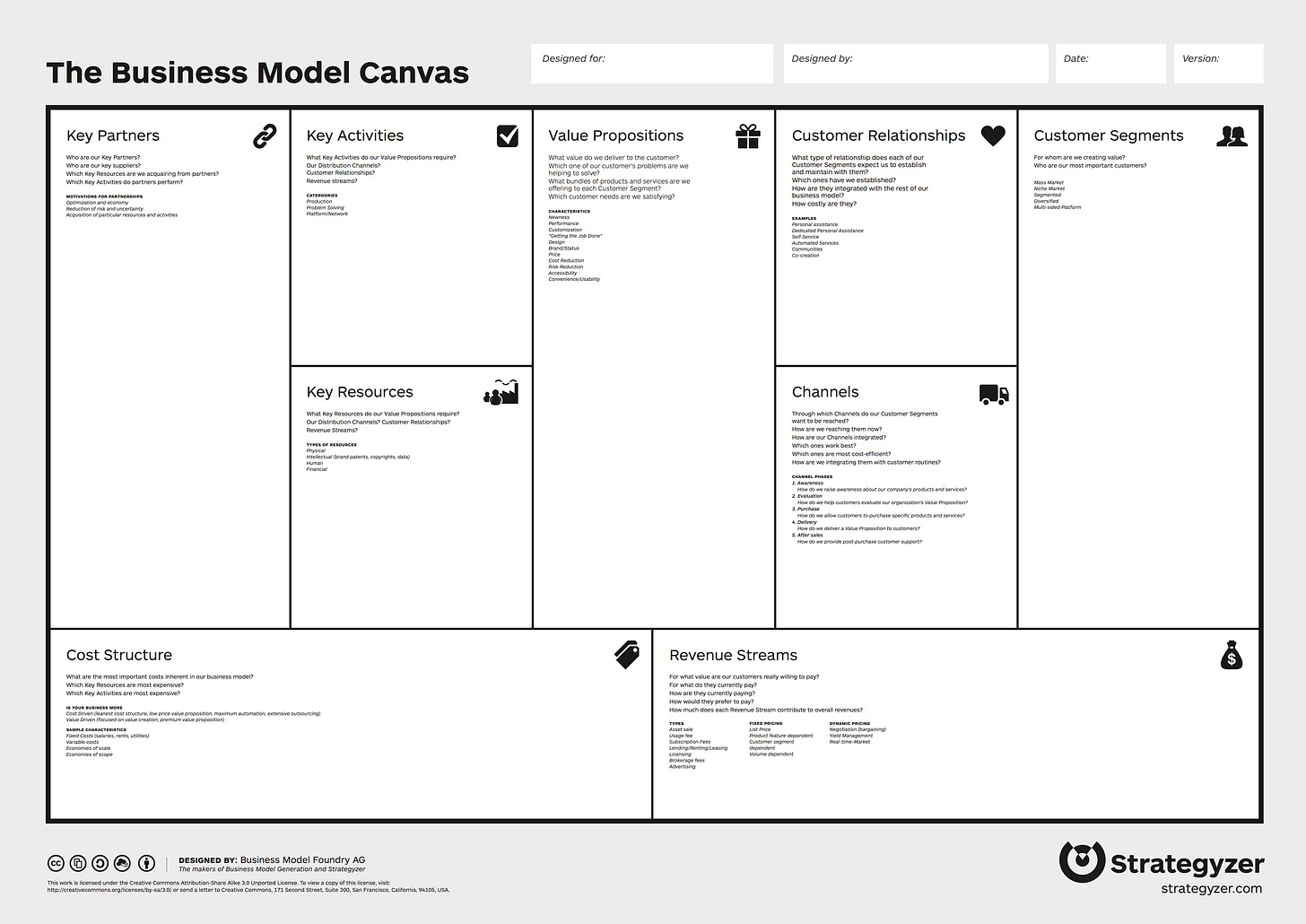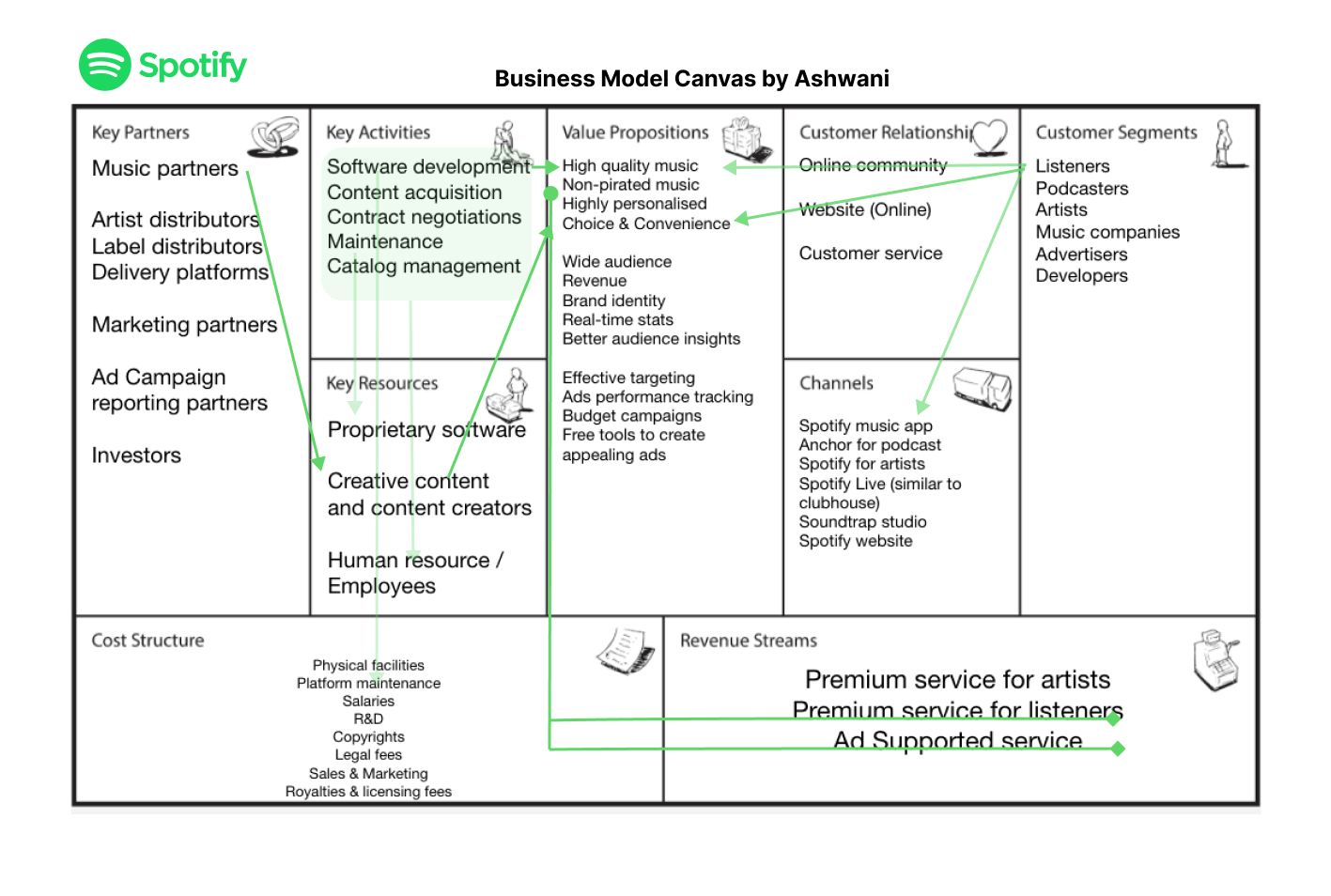Are you looking to turn your business idea into a reality? One key tool that can help you to understand and design your business model is the Business Model Canvas. The Business Model Canvas is a visual representation of the key elements of a business plan, and consists of nine building blocks that represent the key elements of a business model: Value Proposition, Customer Segments, Channels, Customer Relationships, Revenue Streams, Key Resources, Key Partners, Key Activities, and Key Partnerships. By using the Business Model Canvas, you can understand and communicate the key elements of your business model, identify potential challenges and opportunities, and pivot your business model as needed. The Business Model Canvas is a flexible and visual tool that can help you to turn your business idea into a well-designed and viable plan.
When to use business model canvas ?
There are several situations in which you might want to use the Business Model Canvas:
When starting a new business: The Business Model Canvas can be a helpful tool for entrepreneurs and small business owners to use when developing a business plan. It provides a structured and visual way to think about the key elements of the business, and can help to identify potential challenges and opportunities.
When pivoting an existing business: The Business Model Canvas can be used to understand and redesign an existing business model. It allows you to easily test and pivot your business model by making changes to one or more of the building blocks and seeing how it impacts the rest of the model.
When seeking funding from investors: The Business Model Canvas can be a useful tool for presenting your business model to potential investors. It provides a clear and visual way to communicate the key elements of your business, and can help investors to understand how your business will create value and generate revenue.
When working in a team: The Business Model Canvas can be used to facilitate collaboration and teamwork, by providing a common language and framework for team members to use when discussing and developing the business model.

Key elements of Business Model Canvas
The left side of the canvas focuses on the business (internal) while the right side of the canvas focuses on the customer (external). Both external and internal factors meet around the value proposition, which is the exchange of value between your business and your customer/clients.
Let’s dive deep into key elements of business model canvas :
Value Proposition: What value does the business offer to its customers?
Customer Segments: Who are the customers the business serves?
Channels: How does the business reach and serve its customers?
Customer Relationships: How does the business interact with its customers?
Revenue Streams: How does the business make money?
Key Resources: What resources does the business need to create and deliver its value proposition?
Key Partners: Who are the key partners that the business works with to create and deliver its value proposition?
Key Activities: What are the key activities that the business must perform to create and deliver its value proposition?
Key Partnerships: What are the key partnerships that the business must establish to create and deliver its value proposition?
Let’s apply this toolkit on Spotify’s ecosystem. And see whether it is good enough for portraying platform as huge as Spotify.
I tried putting green lines for connecting listener user segment to the rest of the components. This somehow gives a good overview of the business. i.e. Listeners need of high quality music, personalised etc. are served via app and website. And software development activity, content acquisition etc. are required to keep these value prop relevant. And this is achieved via their key partners and key resources. Which has a cost element to it in terms of salaries and platform maintenance.Which is balanced by revenue stream of premium and ad supported service which the user opts for.
I might not have done justice to this but lets see what are the best practice one need to follow for Business Model Canvas :
Keep it simple: The Business Model Canvas is meant to be a high-level overview of the key elements of a business model. Avoid getting too bogged down in the details and focus on the big picture.
Involve key stakeholders: Make sure to involve key stakeholders, such as team members, customers, and advisors, in the process of creating the Business Model Canvas. This will help to ensure that the canvas reflects the diverse perspectives and needs of the people who will be impacted by the business model.
Be flexible: The Business Model Canvas is meant to be a flexible tool that can be used to test and pivot your business model. Don't be afraid to make changes to the canvas as you learn more about what works and what doesn't.
Use it regularly: The Business Model Canvas is not a one-time tool. Use it regularly to review and update your business model as your business evolves.
Use it in conjunction with other tools: The Business Model Canvas is just one tool among many that can be used to understand and design business models. Use it in conjunction with other tools, such as financial projections and market research, to get a more complete picture of your business.
Overall, the key to using the Business Model Canvas effectively is to keep it simple, involve key stakeholders, be flexible, use it regularly, and use it in conjunction with other tools.
Hope this helps. Happy learning.



